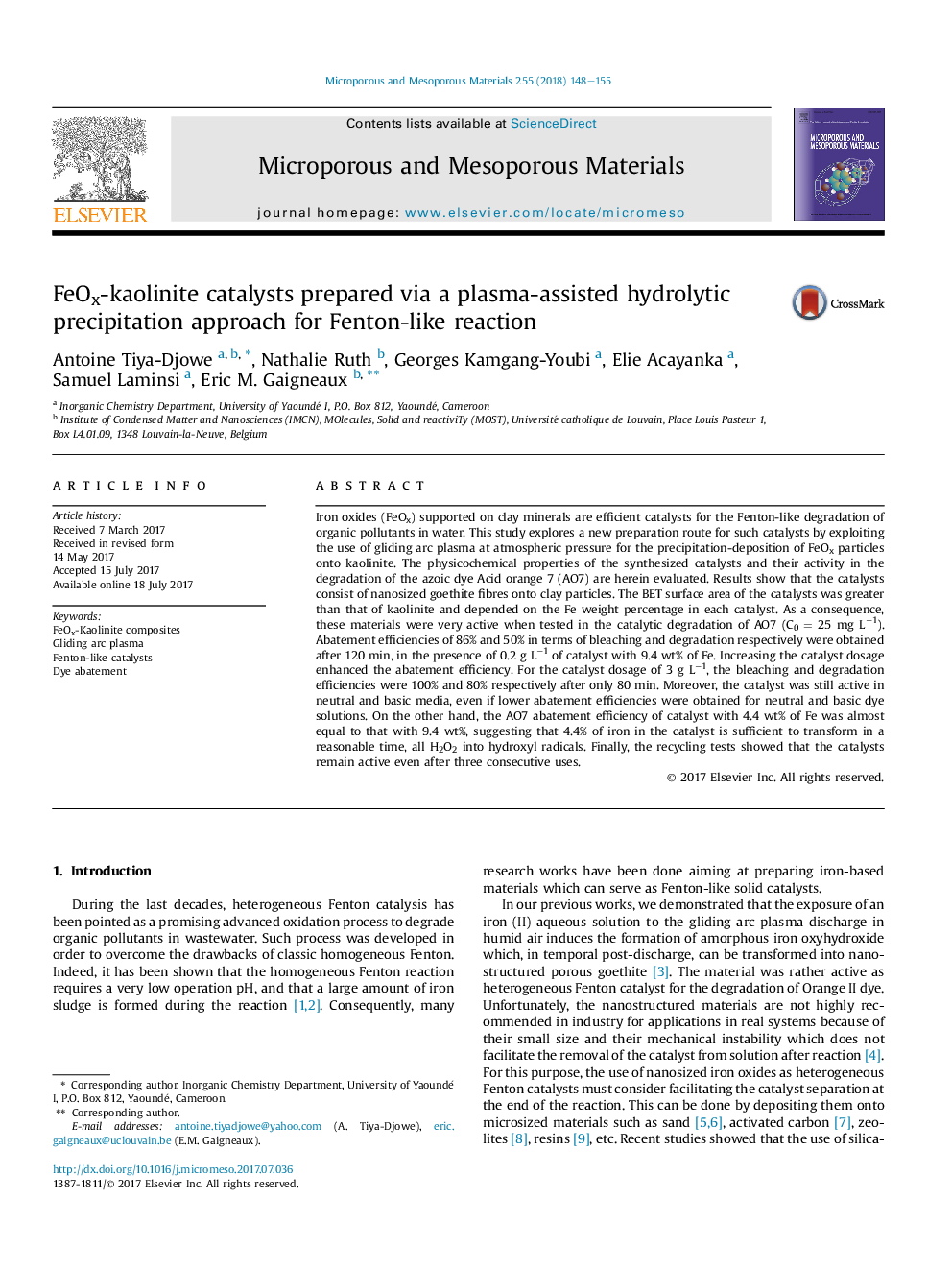| Article ID | Journal | Published Year | Pages | File Type |
|---|---|---|---|---|
| 4758122 | Microporous and Mesoporous Materials | 2018 | 8 Pages |
â¢The plasma technique was used to synthesize mesoporous FeOx-Kaolinite composites.â¢The prepared composites were characterized using ICP-AES, XRD, H2-TPR, TGA and N2-Physisorption.â¢The composites consist of goethite nanofibers deposited on kaolinite particles.â¢The catalytic performances of the composites were tested in heterogeneous Fenton degradation of Acid orange 7.
Iron oxides (FeOx) supported on clay minerals are efficient catalysts for the Fenton-like degradation of organic pollutants in water. This study explores a new preparation route for such catalysts by exploiting the use of gliding arc plasma at atmospheric pressure for the precipitation-deposition of FeOx particles onto kaolinite. The physicochemical properties of the synthesized catalysts and their activity in the degradation of the azoic dye Acid orange 7 (AO7) are herein evaluated. Results show that the catalysts consist of nanosized goethite fibres onto clay particles. The BET surface area of the catalysts was greater than that of kaolinite and depended on the Fe weight percentage in each catalyst. As a consequence, these materials were very active when tested in the catalytic degradation of AO7 (C0 = 25 mg Lâ1). Abatement efficiencies of 86% and 50% in terms of bleaching and degradation respectively were obtained after 120 min, in the presence of 0.2 g Lâ1 of catalyst with 9.4 wt% of Fe. Increasing the catalyst dosage enhanced the abatement efficiency. For the catalyst dosage of 3 g Lâ1, the bleaching and degradation efficiencies were 100% and 80% respectively after only 80 min. Moreover, the catalyst was still active in neutral and basic media, even if lower abatement efficiencies were obtained for neutral and basic dye solutions. On the other hand, the AO7 abatement efficiency of catalyst with 4.4 wt% of Fe was almost equal to that with 9.4 wt%, suggesting that 4.4% of iron in the catalyst is sufficient to transform in a reasonable time, all H2O2 into hydroxyl radicals. Finally, the recycling tests showed that the catalysts remain active even after three consecutive uses.
Graphical abstractDownload high-res image (330KB)Download full-size image
